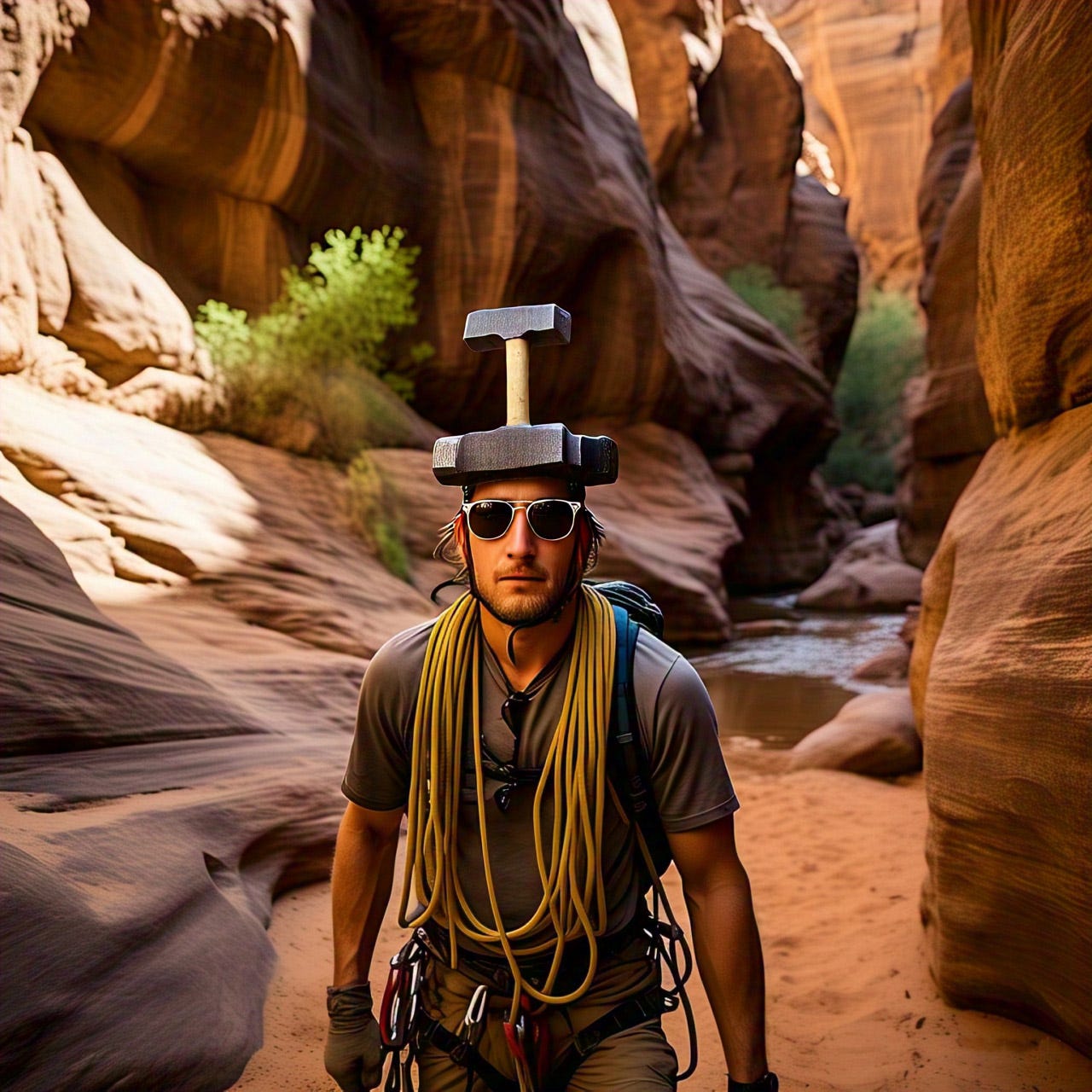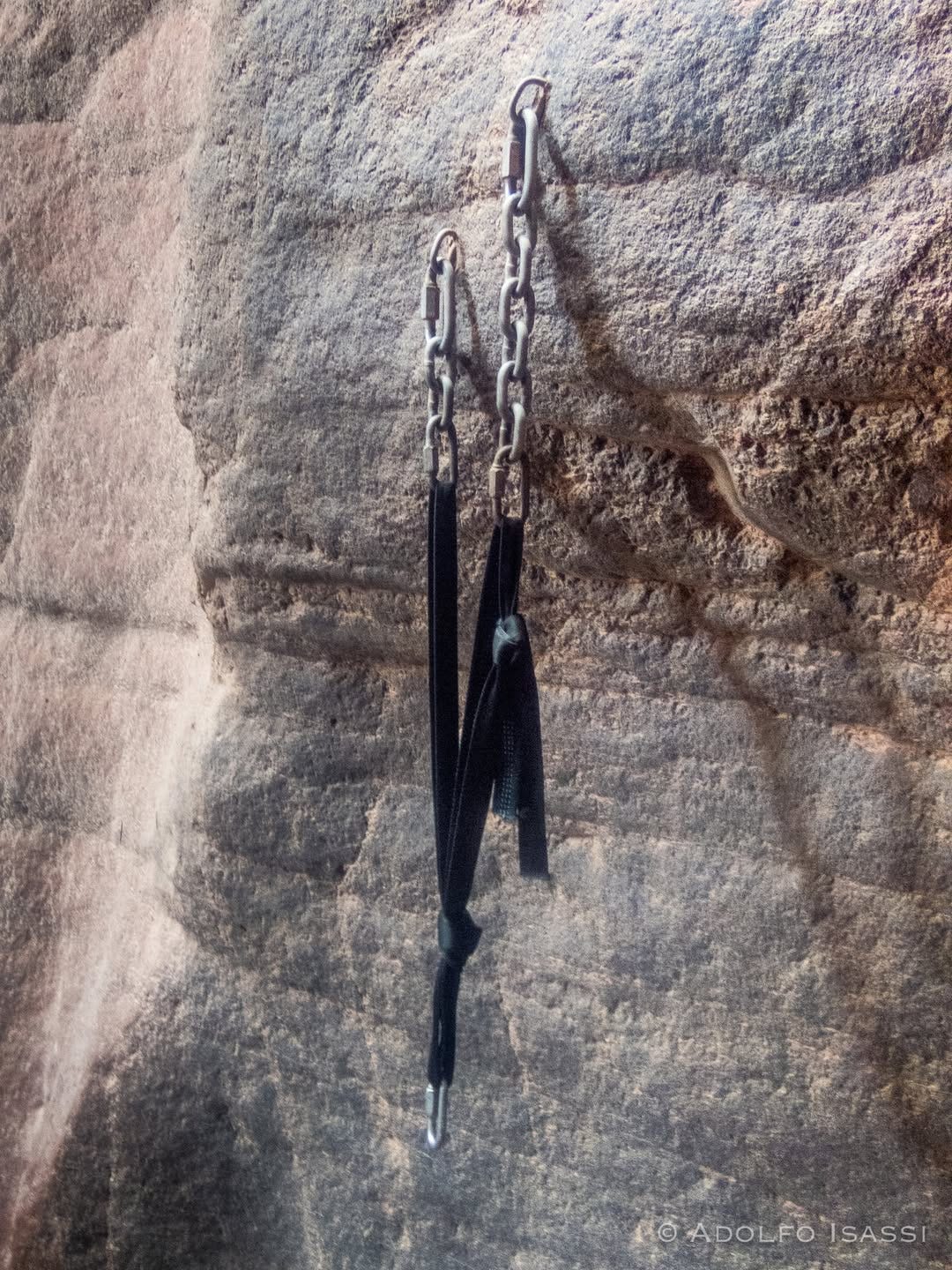If there is one thing that you don't learn in canyoneering classes, or doing laps in the same 20 canyons year after year, is that type of canyons you frequent, shape your perception of what is a good practice, a good piece of gear, and your beliefs on rigging practices.
Just an example
Recently I was reminded of this in the area of:
How to use and manage exposed 2 point rappelling anchors
Use of safety traverse lines
Efficiency and dexterity using safety tethers
If you never, or rarely use these anchors...you are not very good at it, and you may not even know it.
If you are a canyoneer that spends most of the time in canyons with natural anchors that are set 5,10, 20 feet back from the rappel edge, and close to, or on, the ground, chances are that you never use your safety tether, you do not use, or do not know how to rig an operate a traverse line, and you are not used to set up any anchor management. Conversely, you are (hopefully) very good at "soft-starts" :)
This extends to gear, rigging practices, communication in canyons...everything.
So, how this awareness can make you a better canyoneer?
Recognize this aspect about your canyoneering. Recognize its strengths and its limitations.
If you canyoneer on areas with natural low anchors, and you excel at soft-starts and down climbs, leave those practices at home when you go to places with artificial anchors, or slippery rock. Conversely, if you excel at managing artificial anchors, and use extensions in your rappel device, leave it at home when you visit canyons that require soft-starts and do not expect to install webbing in every 10' drop.
In other words, develop a sense of awareness on the environment, and adapt accordingly. If you find that you are solving every problem with the same, comfortable and familiar tool, chances are there is the target area for improvement.
“When your only tool is a hammer, everything looks like a nail”
Some parting examples that I have seen in my time
Rigging static block for every rappel, even when you can not see the bottom of the rappel.
Rigging toggle sticks even on bolted anchors with a clean pull
Rigging releasable blocks even when block is out of reach, or inoperable when loaded
Rigging webbing on everything, even unliked anchors




